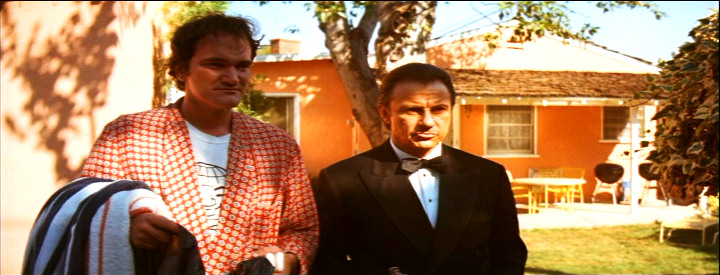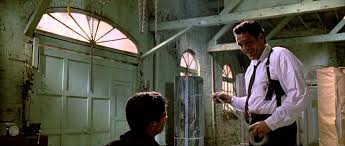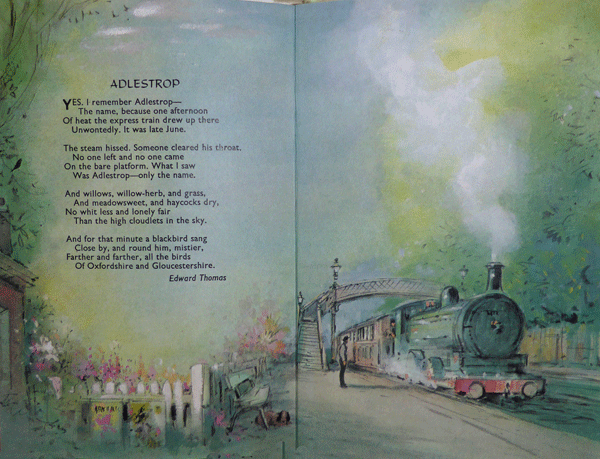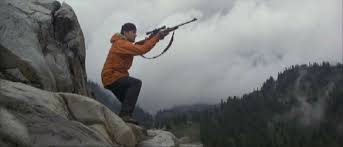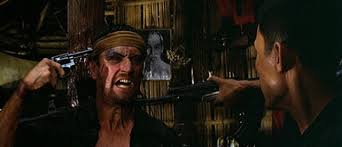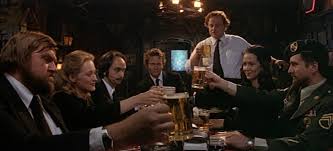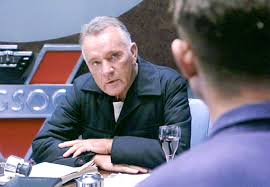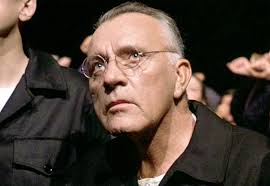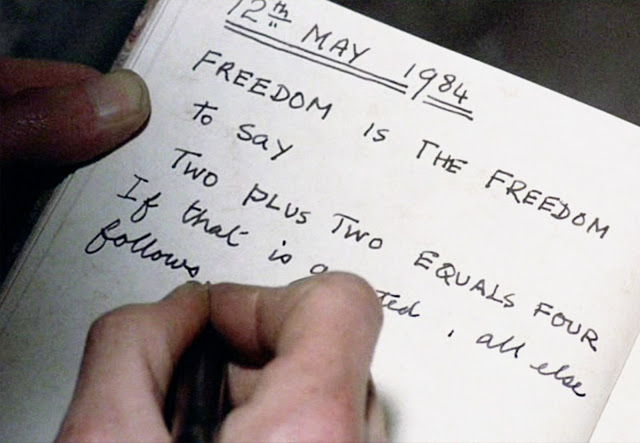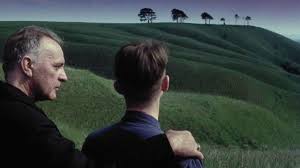The Varnished Culture's Thumbnail Reviews
Regularly added bite-sized reviews about Literature, Art, Music & Film.
Voltaire said the secret of being boring is to say everything.
We do not wish to say everything or see everything; life, though long is too short for that.
We hope you take these little syntheses in the spirit of shared enthusiasm.
The Life of Elves (Muriel Barbery)
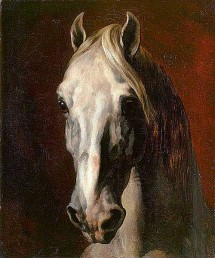
Although a book should not be judged by its cover, we at TVC assert that it can be judged by its title, at least prima facie, unless and until evidence to the contrary is provided. (TVC declined to read The Elegance of the Hedgehog because of our aversion to eye-catching, cutesy titles. How can a novel with such a title, more than 6 million sales and a plot concerning a wise concierge and a suicidal teen be anything but “young adult” pulp?)
The advance notices, however, about Muriel Barbery’s third novel, The Life of Elves were promising. It had a less try-hard title, good reviews and no sales at all yet. The story-line – girls with elf-blood fight in the battle between the alliance of good elves and humans against enemy elves – did threaten to stray into the dread genre of young adult novels masquerading as something a human adult can read. But we elected to give it a try. And we are glad we did.
Although the premise of the gifted children facing supernatural terror is hardly unique, Barbery’s story is singular, poetic and captivating. Dark, quicksilver foundling Maria grows up in a farm in Burgundy, developing powers which allow her to manipulate the nature of things. Blue-eyed, inscrutable Clara grows up in Abbruzzo, listening to the music of the mountains. Maria is found in conversation with a white horse, or is it a wild boar? Clara, a visionary musical marvel, is taken to Rome to be tutored in piano and magic under the guidance of “the Maestro”. She is able to “see” Maria and they collaborate in the battle which closes the story.
When the poetic prose is good, it is effective:-
“She took the Italian envelope in her left hand, and with her right she inserted the pointed tip and began slicing along the edge.
And everything exploded: the door flew open and there was Maria’s outline in the door against a background of stormwild countryside; and the rain, which had been falling hard for a good half an hour, was transformed into a such a powerful deluge that all anyone could hear was the pounding of the downpour in the farmyard…the water did not sink into the ground, but hurled itself against it with a violence that caused an entire expanse of land to thrum as if it were a gigantic drum, before returning to the sky in the shape of gorged smoking waterspouts resounding with the thunder of their impact. Maria stood a moment longer in the door amid the general stupefaction and the terrifying clatter of the waters. Then she closed the door, walked over to the old women and held out her hand to Angelé who without understanding what she was doing, placed the letter in Maria’s palm. The world spun on itself and all of a sudden everything was right way up again, the rain stopped, and in the return of silence the rabbit stew bubbling it its juice made everyone jump.”
But it is often incomprehensible. There is a lot of this sort of stuff :-
“An ethereal joining took place inside her. Her inner worlds reconfigured, their junctures absorbed in the birth of an organic wholeness dissolved from every layer of reality”
(There is much opening of hearts, lives exploding and ancient consciousnesses quivering.)
At times it is simply nonsense:-
“{Leonora Acciavatti]…continued to receive her guests in the same singular manner as in her own home; no one walked behind her through the galleries but rather were arranged employing a geometry that knew nothing of straight lines: you adapted to the rolling and swaying of her movements; similarly, you didn’t sit opposite her, you were seated around her according to geodesic coordinates which imprinted the contours of an invisible sphere upon the private space”
Long passages coil in and upon themselves, fragmentary and in sore need of an editor. There is a sense that the author is trying so hard to be “magical” and “fantastic” that she loses her way, lapsing into confusion and obscurity in the hope that it will read as mysterious. Whether this owes something to a combination of translation and a very successful author being given her own head, it does let this otherwise entertaining book down.
Amid the whirling, overheated writing, many of the characters (in particular the male peasants, the “grandmothers” and the two shape-shifting elves) are difficult to distinguish. It is helpful to copy the table of characters and keep it close at hand.
Barbery is at her best in the magnificent battle scene. although there are faults in the pacing.
In its supernatural passages, talking animals (sorry, elves), windowless pavilion and visions of another world, The Life of Elves evokes C S Lewis, John Crowley, Susanna Clarke and the film of “The Lovely Bones”. While a “young adult” reader may well enjoy this book it is a fantasy for adults and, while not profound, it is worthwhile “light” fiction.
If reading this on an e-reader, do ensure that the endnote reader is functioning as TVC’s was not. The Google translator insisted that mantendré siempre means “always keep”, leaving this reader wondering for some time why Maria should hang onto the swaddling cloth on which the words were embroidered. When the endnote reader was restored to health, it was revelatory to learn that in fact mantendré siempre it is “always maintain”, the motto of the good elves.
Ends are left loose and questions remain unanswered. Barbery is reputed to be working on the sequel now. TVC will probably read the sequel, but we will probably not read The Elegance of the Hedgehog or The Guernsey and Potato Peel Pie Society. Unless you can convince us otherwise.
Continue Reading →Pretty Poison
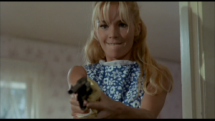
(Dir. Noel Black) (1968)
It starts like a pilot for Psycho II…Norman…er, Dennis (Anthony Perkins), is making a new life as an inspector on an assembly line in Shanty-town, rehabilitating himself after life as a rapist/psycho/firebug.
Dennis has got some mad, grand, plan, and he is innocent, I swear he is, he didn’t know his Aunt was in that house he burnt, but whilst he is clearly too old for trim blonde cutie, Sue Ann (Tuesday Weld), he is not too mad: for she is a match for him, and more!
David Shipman, a highly perceptive critic, suggested that Weld (the key role here) “was superb, in a difficult part, that of a completely amoral girl goading on Tony Perkins, and not averse to a little matricide herself…she was able to suggest both a cherubic innocence of spirit and a satanic enjoyment of evil for its own sake.”
This subtle, insinuating film was grafted from a novel by Stephen Geller, called, divinely, She Let Him Continue. “What a week! I met you on Monday, fell in love with you on Tuesday, Wednesday I was unfaithful, Thursday we killed a guy together…how ’bout that for a crazy week, Sue Ann?” (Well, how about rounding things out with a little matricide?) I think they’re really consummated now!! And Sue Ann can’t promise anything, except that where it comes to sociopathy, there’s equality between the sexes.
“Psychopaths always get caught! They never know when to stop.”
Continue Reading →Brooklyn
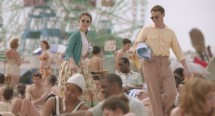
(Dir. John Crowley) (2015)
This film looks lovely. 1950s Ireland and Brooklyn were never more sumptuous. Here we have a story by the massively respected Colm Tóibín and Nick Hornby, with decent actors and competent direction. It is a sad and moving account of an Irish lass who is sponsored by her parish to work in New York, where she finds love and herself torn between two countries.
Now for the bad news – it is possibly the most boring film in recent memory. The Varnished Culture, and two highly cultured friends, Grant and Melanie, fell asleep at various times during the screening, and no, none of us had been drinking heavily. This was so dull as to be more potent than novocaine, except that the pain fails to vanish. The nicely-lit outdoors scenes on pretty Irish beaches enabled us to check our watches. There is simply no reason to have made this flick, and once made, they should have burnt it and collected the insurance. It joins our Hall of Shame.
Continue Reading →Molly (Channel 7 Miniseries)
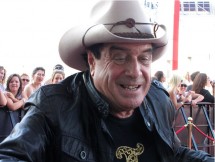
(Channel 7 Mini-Series)
Ian “Molly” Meldrum named his house “Luxor” and hung out with cross-dressers. But Molly was also a brawler and a football fan. While having a genius for television, he could barely string two words together. These contradictions raise questions about this quixotic man, but there was no question for those of us who grew up in the Countdown days. Watching Countdown for 25 minutes on the ABC was what you did on Friday, and then Sunday evenings. Young people today won’t believe it if you tell them that until Countdown, the only tv music shows for the young were occasional all night “Rockathons”* which my brother and I were allowed to stay up to watch in our sleeping bags. Then Molly brought Countdown to the ABC and we could see “film clips” and live music every week..
This two-part biography of Molly concentrates mainly on the genesis of Countdown and its early years. It’s all there. The riveting but painful Prince Charles interview (real footage and a re-enactment). Renee Geyer and John Paul Young both belting Molly in the face. Molly on air somewhat the worse for wear.
This is entertaining and either nostalgic or revelatory, depending on the viewer’s age. But it is bland and predictable in the way of Australian mini-series made for prime time. Like Peter Allen – Not the Boy Next Door), it follows the predictable story arc from early loss through the struggle to be recognised despite evil conservative forces, to the end of it all, via uplifting moments, success and a few silly bits (Molly chasing a train in his underpants). It also, unnecessarily, uses the time-worn devices of depicting the past in sepia tones and of having our subject relive his life life-story while in a coma – although the hallucinations set in the hospital involving Olivia Newton-John, Freddie Mercury and John and Yoko are effective.
Samuel Johnson as Molly is good and uncannily like him, despite the bad wig, one of several. (Again see Peter Allen – Not the Boy Next Door.). Another stand out, Ben Geurens, does not resemble Shirley Strachan at all but leaves us in no doubt that Shirley was unpleasant. Obviously the gloves are off now that Shirley is dead. Perhaps in the interests of delicacy, because Molly, although fragile now is still with us, certain important aspects of his life are glossed-over. Were Molly and Charlie “Caroline” Jenkins (an excellent Ben Gerrard) a couple? That is never clear. What was Molly’s involvement in Caroline’s brothel? We see Caroline planning suicide and then she simply disappears.
Those of us who can still hear that drum roll and “Count dow-own!” remember the countdown of the top ten songs with which every episode ended. That was the highlight and kind of the whole point. Recently, when I returned to the home of my teenage years, I was surprised to see that there was no rut in the road between my friend’s house and mine. I was sure that we had worn one over the years of Sundays when we’d just finished tea and were allowed to watch the top 10 together (as I remember, it was always Bohemian Rhapsody anyway). But the actual countdown is barely mentioned in this series.
Molly is not riveting television, but it’s worth watching, to see The Windsor Hotel in Melbourne (pretending to be in London), to at last learn the truth about the lip-synching, and to see Mr Squiggle (albeit briefly – he had to get back to the moon). Certainly it does leave one with the feeling that being involved in Countdown must have been more fun, a lot dirtier and less morally uplifting than it appears here.
See our review of the Channel 7 follow-up “Molly: The Real Thing” here.
- TVC’s good friend G has pointed out, rather testily, that in fact there were earlier “teen shows”, called Happening 70, Happening 71 and Happening 72. Furthermore, Channel 7’s follow-up to Molly, (Molly: The Real Thing) reminded us of The Go!!! Show, Kommotion and Uptight. A list of Australian music television shows can be seen here. We accept that shows with names like Accent on Youth, Hitscene and It’s a Gas probably were designed to appeal to the youth of the day. How embarrassment.
Continue Reading →
Pulp Fiction

(Dir. Quentin Tarantino) (1994)
It’s flashy, it’s funny, it’s overly literate. Styled after comics and melodrama magazines, it hops about a series of vaguely interconnected vignettes. The thugs trade Tom Stoppard-like wit…a portmanteau potboiler unravels, and whilst everyone self-consciously shoots from the hip, no-one’s hip when they shoot.
This film is great fun, don’t get us wrong, it has some memorable scenes, some top rank stars thoroughly enjoying themselves, and it dumps all over 90% of films made by man, but actually, it shows more talent than brains. No one talks like that in real life and few act that way. To put it another way, in a more solemn mode, one might say that the precocious Tarantino here has forgone the hard work that artistic creation requires, and ‘phoned it in.’
Continue Reading →
Stuck in the Middle with You

Reservoir Dogs (Dir. Quentin Tarantino) (1991)
Pound for pound, Tarantino’s first film is easily his best, a tight, hip and brutal slice of underworld life, as a diamond robbery goes awry and the question is whether there’s a rat in the ranks. Full of flash-backs and flash-forwards, it fills out the back stories with real wit and fervour.
And the performances crackle. Lawrence Tierney as the crime boss is scotch over gravel. Harvey Keitel, stoic as Mr White, is perhaps the central character, along with rookie Mr. Orange (Tim Roth). Steve Buscemi as the snakey Mr. Pink is terrific – so is Chris Penn as ‘Nice Guy’ Eddie, and Randy Brooks as Orange’s handler.
And then, of course, there’s Mr. Blonde (Michael Madsen). A combination of Travis Bickle and Charles Manson, he convinces us that it really is amusing to him to torture a cop. The Varnished Culture doesn’t like torture scenes but this one is in context and it does have a degree of style, especially as it is accompanied by ‘K-Billy’s Super Sounds of the Seventies’, Mr. Blonde’s personal favourite.
Tarantino has become a byword for flashy violence, but here it doesn’t seem gratuitous, nor opportunistic. These are career criminals, operating in a sink of paranoia, with egos to match. There are script weaknesses and improbabilities (why don’t the rat and the cop scarper while they have the chance? Why do the crooks assemble at the rendezvous when they suspect the jig is up?) but it holds together well, so look past the stuff not quite nailed and lap this up, or, as Blondie would say, “Are you gonna bark all day, little doggie, or are you gonna bite?”
Continue Reading →My History: A Memoir of Growing Up

(by Lady Antonia Fraser)
It would be unfair for me to compare Lady Antonia Fraser’s first volume of memoirs with that of her cousin, Ferdinand Mount because in many aspects Fraser had the (early) life and has had the career that I wanted, whereas I felt only the vaguest envy for Mount’s connections and have never aspired to working for Margaret Thatcher.
While growing up in the hideous new lower-middle-class outer suburb of Dust in South Australia, attending Dust Primary and High Schools, I knew that I really belonged in a large nook-filled house in Oxford, attending a private school, learning Latin and Greek in preparation for Oxford, in its turn a preparation for my inevitable career as an author. A terrible, rather complicated and unlikely mistake had been made. So, unfair as it is to compare the memoirs, given my identification with one cousin and not the other, I shall commence the comparison now.
Although Fraser’s mother insists that her socialist-leaning family was middle-class, the Mount-Longford-Pakenhams are aristocrats. While Mount is at pains to never let it be forgotten that every important person in the UK is a relation or friend, Fraser’s name-dropping is less intensive and more relevant. Fraser and Mount’s paths did not seem to cross often, but whereas Mount MUST mention that the Lady Antonia he encounters at a dinner party is his cousin, Fraser does not mention Ferdy, although she maintains a grateful affection for his parents, her Aunt Julia and Uncle Robin, who visited her (whereas her parents did not) during her miserable years at Godolphin School (this coming after her years at the fabulous Dragon School, which I was obviously meant to attend.) Mount’s risible classification of his family as poor is unironic and unambiguous, whereas Fraser slyly introduces her family’s “poverty” as a matter of her parents’ perception again, about which her view is not given):-
“As matters progressed, Frank and Elizabeth got to the stage of working-out that between them – my mother’s middle-class allowance being rather larger than my father’s upper-class one – they would have about one thousand pounds a year (roughly fifty thousand pounds today). Both of them felt that for two people this indicated poverty, my mother with energetic determination that my father’s extravagance should be curbed, my father with a fatalistic shrug of the shoulders: for him some kind of guilt lurked around joy itself, making it certain that life could never be easy.”
While each of the cousins has the innate confidence of the upper-class, Antonia is exuberant and untroubled. Mount is inward and unsettling. Fraser’s attempts at feet-on-the-ground acceptance of her shortcomings is somehow even less convincing than Mount’s overdone modesty.
Fraser’s book belts along at a fine rate, while Mount’s does not pick up pace until the end when he takes to politics. It is, one suspects, the very speed of the writing which allows surprising, jarring lapses in the. language. For example, having praised her best friend Lucy’s home as a mixture of the artistic and of “warm family life” Fraser says this – “Holidays in the Pollens’ house on Lambay Island off the coast of Dublin were even more agreeable, with a cowrie shell gathered from the beach serving as a souvenir of the same hospitable combination” and she describes Victor Kravchenko who had been a Soviet official before obtaining asylum in the US as a “captivating speaker, in the literal sense of the word“.
Fraser is a quick-reading child, a clever secondary student and a lazy undergraduate. She is not a deep thinker. The Fraser parents convert to Catholicism. In her eager way this is nothing but excitement and romance for the teenage Antonia for whom conversion is more a matter of improved aesthetics, the opportunity to adopt saints as personal heroes and an important social distinction rather than any issue of spiritualism or faith. In the same way she impulsively decides to vote Tory because she likes their election poster and then becomes engaged to marry a man whom she does not even realise is a Tory MP, despite years spent assisting her socialist MP parents on the hustings.
Fraser let both of us down by attending a college other than Magdalen and by failing to earn a first. However, she then did quite well by us by working with a publisher for a while. Following that short stint she started on the ground-breaking royal biographies, histories and Jemima Shore novels for which she is famous. She has written a memoir previously, a sort of sequel about her years with Harold Pinter.
I too read a great deal as a child. “The Wind in the Willows” ” The Little White Horse”. “Tom’s Midnight Garden” “The Secret Garden”. “The Weirdstone of Brisinghamen”, “Alice in Wonderland” “The Hobbit” were all written in and about a UK (usually England) where fairies lived at the bottom of the garden. Thus the UK (a UK which never existed) was a faeirie place to me but it was Antonia Pakenham’s world.
“Any time, any place, the sound of bells reminds me of Oxford. Venice at evening: I’m transported back to childhood. The water dissolves into the River Cherwell. St Mark’s fades into Christ Church doorway; the romantic gondolas become everyday bicycles. Much later, when I discovered for myself the poetry of Edward Thomas, his most famous poem became transposed in my mind : all the bells of Oxfordshire, not the birds, sang for him at Adlestrop. And for me ever since.”
This passage, with which the book opens. rang a bell for me. I turned to my beloved collection of The Fireside Books of AD Hope – I took these evocative, romantically illustrated poems to be true representations of the world I really belonged in. And there it was –
I think that the young Antonia Pakenham might have found this a little twee.
Continue Reading →
The Deer Hunter

(Dir. Michael Cimino) (1978)
How war tears a small, close-knit community to shreds. Beer-drinking buddies from a steel town in Pennsylvanian hinterland, totally committed to going off to fight in Vietnam, all black-and-white in a world of grey, find themselves traumatised, humiliated, chewed-up and spat out, coming home completely changed and with a darker world-view. Cimino’s best (one might say, only decent) film is a remarkable, potent effort, one tending to galvanise heated reactions in the viewer.
There have been objections to its length. Certainly, the initial wedding ceremony and celebrations are long but whilst The Varnished Culture generally much prefers concision, these scenes are useful rites to establish the characters, per se and in their community setting. After the drunken wedding and the confrontation with a sour Green Beret in the bar (which might have given less naïve soldiers an idea of what they were in for), there is additional bonding material as the lads go hunting. Remember, the deer has to be taken with one shot. And then, Mike, Nick and Steven (John Savage) go off to ‘Nam.
The acting is more or less faultless and particularly impressive are Robert De Niro as Mike, Christopher Walken as the sensitive and apparently stable Nick, Meryl Streep as Linda, John Cazale as Stan and George Dzundza as the boys’ putative uncle.
In a sense, we can ignore the tacked-on, slightly ludicrous Russian roulette motif in the latter part of the film. It was cannibalised from an earlier script and serves as a (heavy-handed) way of synthesizing the horrors of war and juxtaposing the figures losing their innocence with those who lost that luxury aeons ago. At the time of the film’s release, those against American involvement in Vietnam violently objected to the depiction of US Soldiers as victims, preferring to wallow in My Lai massacre narrative. They had a point – when the survivors sing ‘God Bless America’ at the conclusion, you wonder whether this is propaganda and if so, in which cause – but these contentious aspects serve a dramatic purpose here, and remember folks – it’s only a movie.
It is less a war movie than a coming-of-age movie – Boys, unite!
The Vietnam War was a tragic conflict within the umbrella of the Cold War, one this writer maintains to have been a necessary evil. (That is an argument in which he invariably receives a black eye, but we will chance that again below). As for The Deer Hunter, we commend it as a very human and poignant piece on the nightmare of war and its aftermath – the baby-boomer generation’s answer to The Best Years of Our Lives.
Let’s now re-fight the Vietnam War, bare-knuckled!
Continue Reading →Ace in the Hole
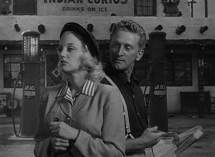
Politics love disaster: ‘”Ace in the Hole” aka “The Big Carnival” directed by Billy Wilder, with a great star turn by Kirk Douglas, could just be the best cynical disaster film ever made.
[UPDATE: With a general federal election now called in Australia for 2 July 2016, the Beaconsfield Mine collapse has appeared as part of the opposition’s political campaign. Ten years ago (Autumn 2006) Brant Webb and Todd Russell left the pit, triumphantly clocking-off, after spending a fortnight trapped underground. There had been an earthquake and the tunnels didn’t hold. 14 other miners escaped early on; of the three that were buried, Larry Knight didn’t make it. It was a remarkable story of chance, luck, survival and resilience. It was also a tale of exploitation. For those two weeks, the event became a media circus, with the good and the great travelling to northern Tasmania to wring hands and shout the bar.Mining disasters evoke strong visceral reactions, and have led to numerous musical homages: The Ballad of Spring Hill, New York Mining Disaster 1941 and the Foo Fighter’s bluegrass tribute to Beaconsfield. Cynics as we at TVC are, we prefer to recall this acrid film, the alternate title of which is, appropriately, The Big Carnival:]
(Dir. Billy Wilder) (1951)
Cynical flim flam journo Carl Kolchak – er, sorry, Charles Tatum (Kirk Douglas) is stuck in a dead-end Albuquerque newspaper, replete with small-town standards and wall samplers saying ‘Tell the Truth’. Kirk aches to get back with a big city rag. On his way to cover a rattlesnake hunt (yes, you heard right – a rattlesnake hunt), he happens upon a disaster at the “Mountain of the Seven Vultures”, an old Indian burial ground (yes, the old Indian burial ground), where a local schmuck of an artefact-thief is trapped underground.
Tatum grabs the story with both hands and sexes it up, slapping some tears into the schmuck’s not-so troubled wife along the way. He smells a Pulitzer Prize. Meanwhile, a lot more than seven vultures are beginning to circle. Grotesque, acrid, cynical, highly offensive (and unpopular) in its day, this piece of work is too explicit to be entirely true, and too true for comfort. A memorable and pungent film though, with Douglas a vibrant villain.
Continue Reading →1984
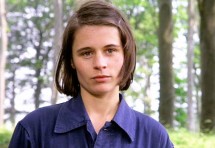
(by George Orwell)
[films by Michael Anderson (1956) and Michael Radford (1984)]“It was a bright cold day in April, and the clocks were striking thirteen.” Thus does George Orwell dare start his last book with the dreaded weather line (cf. Bulwer Lytton), yet it works brilliantly. All of this Miltonian tract works brilliantly.
It does because George was a certified seer, a genius. As Anthony Burgess wrote of 1984: “a mere novel, an artefact meant primarily for diversion, has been scaring the pants off us all. It is possible to say that the ghastly future Orwell foretold has not come about simply because he foretold it: we were warned in time.”*
Oceania is a world of lies, where human nature must be concealed, language is corrupted to close down heresy, and the truth is handed out by the State, and infinitely malleable. A lot like the Soviet Union c. 1934 – 1984, or Saudi Arabia and North Korea today. Winston Smith is a most unlikely, vulnerable rebel, which makes the enormity of his oppression even more terrible. He is attracted to co-worker Julia and they start an affair in which Big Brother is cuckold. And he bites back, with all of his formidable resources: an intelligentsia that constitutes the oppressive single political entity; thought control of an international scope; a fully cowed underclass; television screens that watch you. A nightmare dystopia of shadows, in other words.
Burgess thought 1984 an imperfect, didactic novel. Cyril Connolly suggested it “fails aesthetically through personal despair”^ Christopher Hitchens thought it great in part due to “its conscious analogy to the English Reformation.”** The Varnished Culture thinks the reformation analogy worthy but of a low order importance. We did not fall asleep during the dialectics of the Trotskyite Goldstein. We consider 1984 a brilliant novel, visionary with respect to past, present and future.
It is relentless, clear, fresh, and unremittingly sad. “Under the spreading chestnut tree…I sold you and you sold me.”
The 1956 film version is good, but showing its age. The 1984 film, aptly, is best, an alternately gritty and surreal fantasy of fear and gloom, and despair, featuring John Hurt as the ideal Winston, Cyril Cusack the ambiguous shopkeeper, and Richard Burton sublime as O’Brien, a high Party official.
It has been asserted that Orwell was something of a nostalgic romantic, who pined for a little England free from the lethal orthodoxies of his age. ‘Oranges and lemons, say the bells of St. Clemons’…There are worse things to regret.
[*Ninety-Nine Novels, introduction and p.46.] [^Previous Convictions, p. 319.] [**”The Men Who Made England” The Atlantic 2010.] Continue Reading →
